|
|
May 18, 2023
This e-newsletter delivers announcements from EPA's Office of Resource Conservation and Recovery on rulemakings, guidance documents, reports, research, upcoming webinars, and more.
|
|
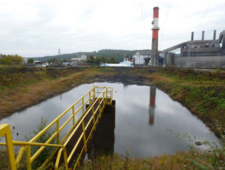
Today, EPA proposed to amend the rules governing the disposal of coal combustion residuals (CCR or coal ash) in landfills and surface impoundments.
First, EPA is proposing to establish regulatory requirements for inactive surface impoundments at inactive facilities (referred to as “legacy CCR surface impoundments”). We are proposing safeguards for legacy coal ash surface impoundments that largely mirror those for inactive impoundments at active facilities, including requiring the proper closure of the impoundments and remediating coal ash contamination in groundwater. This proposal responds to the 2018 U.S. Court of Appeals for the District of Columbia Circuit ruling that vacated the exemption for legacy CCR surface impoundments from the regulations.
Second, through implementation of the 2015 CCR rule, EPA found that power plants with regulated impoundments also disposed of coal ash in areas outside of regulated units. These areas could include coal ash in surface impoundments and landfills that closed prior to the effective date of the 2015 CCR Rule, inactive CCR landfills, and other areas where coal ash is placed directly on the land. EPA is also proposing to establish groundwater monitoring, corrective action, closure, and post closure care requirements for these areas (referred to as “CCR management units”).
EPA is collecting public comments on this proposal through July 17, 2023. EPA will also hold both in-person and virtual public hearings.
For more information, visit our proposal webpage.
|
|
|
|
Today, EPA launched a new data visualization to show the projected sea level rise around hazardous waste facilities within estimated flood zones along the U.S. coastline, as part of a whole-of-government approach to confronting the climate crisis and protecting communities.
EPA developed this map to help coastal communities, states, regions, and hazardous waste facility managers to better prepare for the impacts of climate change; independently assess their sea level rise vulnerabilities; and help inform actions they can take to become more resilient to climate change.
Explore the new data visualization which shares projections up to the year 2100 as well as resources for what communities can do.
|
|

On May 5, 2023, EPA issued a reinterpretation of the Resource Conservation and Recovery Act (RCRA) industrial ethyl alcohol exemption as it applies to the reclamation of alcohol-based hand sanitizer. The memo explains that unused industrial ethyl alcohol that is reclaimed, including unused alcohol-based hand sanitizer, qualifies for the industrial ethyl alcohol exemption in Title 40 of the Code of Federal Regulations (CFR) in section 261.6(a)(3)(i).
To use this exemption, the reclaimer must have or obtain the proper Alcohol and Tobacco Tax and Trade Bureau (TTB) industrial ethyl alcohol permits and comply with all TTB regulations for industrial ethyl alcohol. The hand sanitizer, the reclaimed industrial ethyl alcohol, and reclamation processes must comply with the RCRA legitimacy factors in 40 CFR section 260.43. Additionally, the reclaimed ethanol may be burned for energy recovery in the United States in a unit that is not subject to RCRA permitting requirements, provided all applicable TTB regulations and RCRA legitimacy factors are complied with.
This memo supersedes the discussion of the industrial ethyl alcohol exclusion in EPA’s November 17, 2022 memo: “RCRA Management of Excess Alcohol-based Hand Sanitizer.” The rest of the November memo continues to reflect current EPA policy.
Read the new memo (pdf).
|
|
|
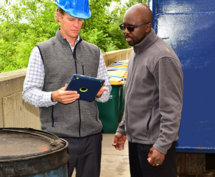
On May 5, 2023, EPA issued a policy memo allowing remote signers for electronic manifests. This memo communicates EPA’s new policy to allow generators, transporters, and receiving facilities to execute electronic signatures through system-to-system communication for their non-registered employees and contractors via registered users who are remotely located from the hazardous waste shipment.
Read the memo (pdf).
|
|
|
|
EPA developed a training about the federal hazardous waste organic air emissions standards that focuses on applicability, exclusions and exemptions, and recordkeeping requirements. This recorded training also identifies important considerations in developing leak detection and repair programs that comply with the air emissions standards and provides relevant resources.
|
|
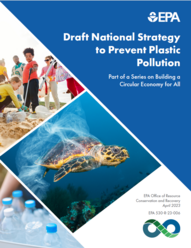
EPA is soliciting comments on the “Draft National Strategy to Prevent Plastic Pollution,” which builds upon EPA’s National Recycling Strategy and focuses on actions to reduce, reuse, collect, and capture plastic waste. Comments are due on or before June 16, 2023. EPA is asking the public to consider several key questions in the draft strategy.
Submit your comments at Regulations.gov by following the online instructions provided.
|
|
|
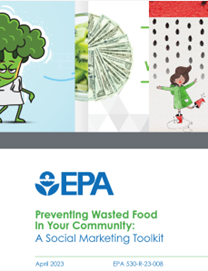 |
|
EPA’s Preventing Wasted Food in Your Community: A Social Marketing Toolkit is now available!
The toolkit is a resource for states, territories, local governments, Tribes, and nongovernmental organizations who want to start a behavior change campaign to help prevent food waste in their communities.
The toolkit includes a planning process that uses social marketing principles to ensure communities are tailoring the campaigns to their communities' needs. The toolkit is accompanied by food waste prevention campaign materials created by municipalities and organizations that are available for use and customization by any community.
|
|
|
|
A new survey is open for anaerobic digestion facilities processing food waste in the U.S. This is the fifth in EPA’s Anaerobic Digestion Data Collection Project.
The survey collects data from three types of facilities: stand-alone digesters, on-farm co-digesters, and water resource recovery facilities with anaerobic digestion that co-digest food waste. For the first time this year, EPA created one survey to cover all facility types instead of three.
Data from this survey enables policymakers, investors, and interested parties to gain a comprehensive picture of how food waste is being handled in anaerobic digestion facilities across the country.
You can find out more about this project, including reports from the previous four rounds of data collection, on our website.
|
|
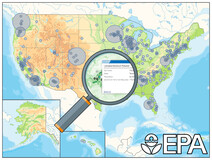
EPA’s Recycling Infrastructure and Market Opportunities Map is now open for public comment through June 26, 2023. The map displays existing recycling and municipal solid waste infrastructure, estimated per capita generation and recycling of post-consumer material, and other relevant market factors.
By providing a comprehensive resource for understanding opportunities related to post-consumer materials management, this map can help develop and strengthen primary and secondary end markets for materials, support cleaner communities by reducing the amount of plastic and other waste entering landfills, and provide opportunities to address climate change by diverting more materials from landfills.
EPA seeks public comment on currently available data and information used in the map, specifically about the accuracy and completeness of the data, ease of use, graphics, and future updates.
Check out the Recycling Infrastructure and Market Opportunities Map on our website.
|
|
|
|
|
|